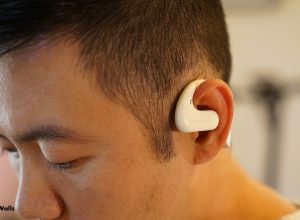In our modern society, computers have become ubiquitous. Knowing how to type isn’t something that is “nice to know,” it’s a necessity.
But what if you can’t type well on a computer? Are you a slow typist? Or are you more of “hunt & peck” kind of typer? What does a person do if they can’t master the keyboard?
Let’s take a look at some information that can help you learn how to type faster.
1) Practice Makes Perfect
It may sound silly, but practice is the way to become the master of your keyboard. Nobody is born knowing a skill. To become an excellent typist, you have to practice. Your brain has to learn where the keys are via muscle memory.
Even though typing lessons are not offered in schools, the internet can fill that void. Videos such as this one from Howcast offer online lessons for anyone looking to improve their skills.
Rome wasn’t built in a day. Your typing skills won’t be either. Set goals and practice regularly. It’s the only way for you to learn a new skill.
2) Start With (And Maintain) Good Posture While Typing
Raise your hand if you are guilty of slouching over your desk. What about sitting on the couch and slouching to reach your laptop on the coffee table? Everyone reading should have a hand in the air! I’ve done that a few times alone just writing this article.
FYI-all of those things that may feel comfortable isn’t helping your typing speed at all. As a matter of fact, they are slowing you down. So, in this case, what feels good actually isn’t good at all.
Proper posture is key to typing faster. You can’t properly access your keyboard unless you do. Utilize the following tips for proper typing form:
- Sit up straight, and keep your back straight while typing.
- Keep elbows bent at a right angle (90 degrees).
- Adjust the screen height so the top line is at eye level
- Keep a distance of 45-70 centimeters between your eyes and your computer screen.
- Maintain a neutral, straight wrist when typing. Never rest your body weight on your wrists.
Not only will proper posture help you type faster, but it will also help you avoid RSIs (repetitive stress injuries). Alan Hedge, Director of the Human Factors and Ergonomics Laboratory at Cornell University, has done extensive research on topics related to workplace ergonomics.
“Prevention is better than reaction,” according to Hedge. His research has shown that each keystroke adds force to our fingers. Typing at an average pace of 6000 keystrokes per hour, multiplied by seven hours per day, five hours per week, is an additional 20 tons of force on your fingers per Hedge.
Proper posture helps take some of that force off. Poor posture can also cause stress injuries in one’s neck, back, and wrists—including the well-known Carpal Tunnel Syndrome. No one has time to deal with any of these ailments! Focus on maintaining good posture, and you will see your typing speed increase as well as lowering your risk of RSIs.
3) Learn To Type Without Looking At the Keyboard
If you are a novice typist, or a person prone to making errors, you are probably reading this thinking, “You have GOT to be nuts!” While that may be true, I’m not crazy when it comes to this typing tip. You will type faster when you stop looking at the keyboard.
Add touch typing to your online typing lessons. The same sites that offer typing lessons offer instructions on touch typing. Train yourself to keep your eyes on the screen. Let your muscle memory move your fingers to where they need to be.
Some touch typists can hit speeds of over 100 words per minute. Most touch typists average between 60-80 words per minute.
4) Use An Ergonomic Keyboard
An ergonomic keyboard looks far different from your standard keyboard. Some have curves, while others have the keyboard split in half. This unique look is why so many people avoid them. Quite frankly, you shouldn’t.
That split or curve in the keyboard is what helps you reduce stress on your hands, arms, and wrists. It also forces you to use correct hand positioning to type. And by splitting the keyboard in half, it makes you break poor typing habits like reaching further than you should for keys. This will help increase your typing speed.
More research is still needed before groups like the CDC give these keyboards their endorsement. But get ahead of the curve, and adapt now. Preventing an injury is always the best course of action. Not to mention, you will type faster.
5) Learn Keyboard Shortcuts
You don’t have to learn every keyboard shortcut. There are too many to memorize all of them! But learning the ones you need most frequently will save you copious amounts of time. This also helps you keep your hands on the keyboard while maintaining proper form since you don’t have to waste time reaching for the mouse.
For examples of the most popular shortcuts, check out this article from TechWalls. You can then choose which are the most relevant to your line of work.
Conclusion
Typing is an unavoidable part of life. While not everyone will become a 100+ word per minute typist, there is always room for improvement. Or at least some bad habits we all need to break. Follow these tips, and faster typing speeds will follow.
Disclosure: We might earn commission from qualifying purchases. The commission help keep the rest of my content free, so thank you!



